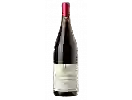
Winery Bonnet-HuteauNuit Boréale
This wine generally goes well with pork, vegetarian or poultry.
Food and wine pairings with Nuit Boréale
Pairings that work perfectly with Nuit Boréale
Original food and wine pairings with Nuit Boréale
The Nuit Boréale of Winery Bonnet-Huteau matches generally quite well with dishes of pork, rich fish (salmon, tuna etc) or vegetarian such as recipes of pork roll with tomato sauce, sea bream with white wine or zucchini quiche.
Details and technical informations about Winery Bonnet-Huteau's Nuit Boréale.
Discover the grape variety: Chardonnay
The white Chardonnay is a grape variety that originated in France (Burgundy). It produces a variety of grape specially used for wine making. It is rare to find this grape to eat on our tables. This variety of grape is characterized by small bunches, and small grapes. White Chardonnay can be found in many vineyards: South West, Burgundy, Jura, Languedoc & Roussillon, Cognac, Bordeaux, Beaujolais, Savoie & Bugey, Loire Valley, Champagne, Rhone Valley, Armagnac, Lorraine, Alsace, Provence & Corsica.
Informations about the Winery Bonnet-Huteau
The Winery Bonnet-Huteau is one of of the world's great estates. It offers 23 wines for sale in the of Loire Valley to come and discover on site or to buy online.
The wine region of Loire Valley
The Loire Valley is a key wine region in western France. It follows the course of the Loire River on its Long journey through the heart of France, from the inland hills of the Auvergne to the plains of the French Atlantic coast near Nantes (Muscadet country). Important in terms of quantity and quality, the region produces large quantities (about 4 million h/l each year) of everyday wines, as well as some of France's greatest wines. Diversity is another of the region's major assets; the styles of wine produced here range from the light, tangy Muscadet to the Sweet, honeyed Bonnezeaux, the Sparkling whites of Vouvray and the juicy, Tannic reds of Chinon and Saumur.
The word of the wine: Flavours (families of)
Aromas are classified into categories called families of aromas: fruity, floral, fermentative, vegetal, woody, balsamic, spicy, mineral, empyreumatic, animal.














